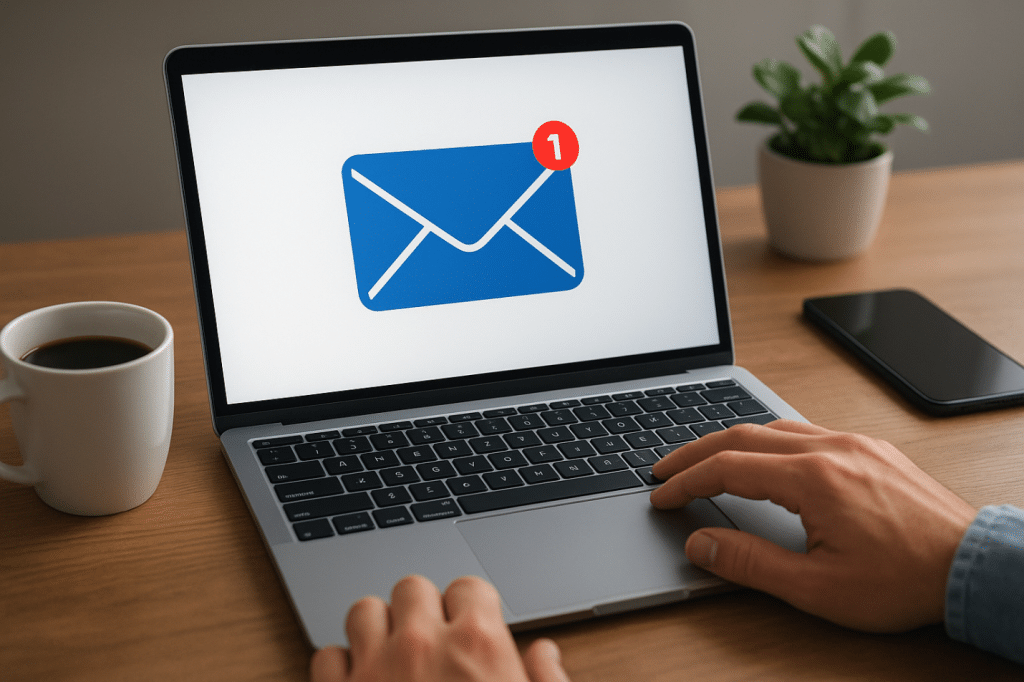Choosing the appropriate email service provider is essential to businesses that seek to build meaningful relationships with its audience. Even with a startup that sends your first newsletter or an established company with millions of subscribers, the email marketing platform that you select greatly influences the customer engagement and the conversion rates and the general growth of the business. In the ever-saturated market with email providers, it is more than ever that a well-informed choice must be made. This is the ultimate guide to all you need to know about the email service providers and how you can find the ideal solution to your special business requirements.
What is an Email Service Provider?
Definition and Overview
An email service provider (ESP) is a dedicated service that allows companies to transmit, conduct, and monitor email programs in bulk. The ESPs are developed to provide advanced functionalities that are market-oriented, unlike the traditional email applications like Gmail or Outlook that are designed to support individual communication. These services deal with technicalities such as server administration, IP reputation checking, spam conformance, and inbox placement optimization. The latest ESPs have full-fledged analytics, automation features, segmentation, and template builders that change email into a marketing juggernaut and make sure that the messages are delivered to the inbox of the recipient and not their spam box.
Types of Email Service Provider
Email service providers exist in many shapes and forms, each of them addressing the needs of a business in a different manner.
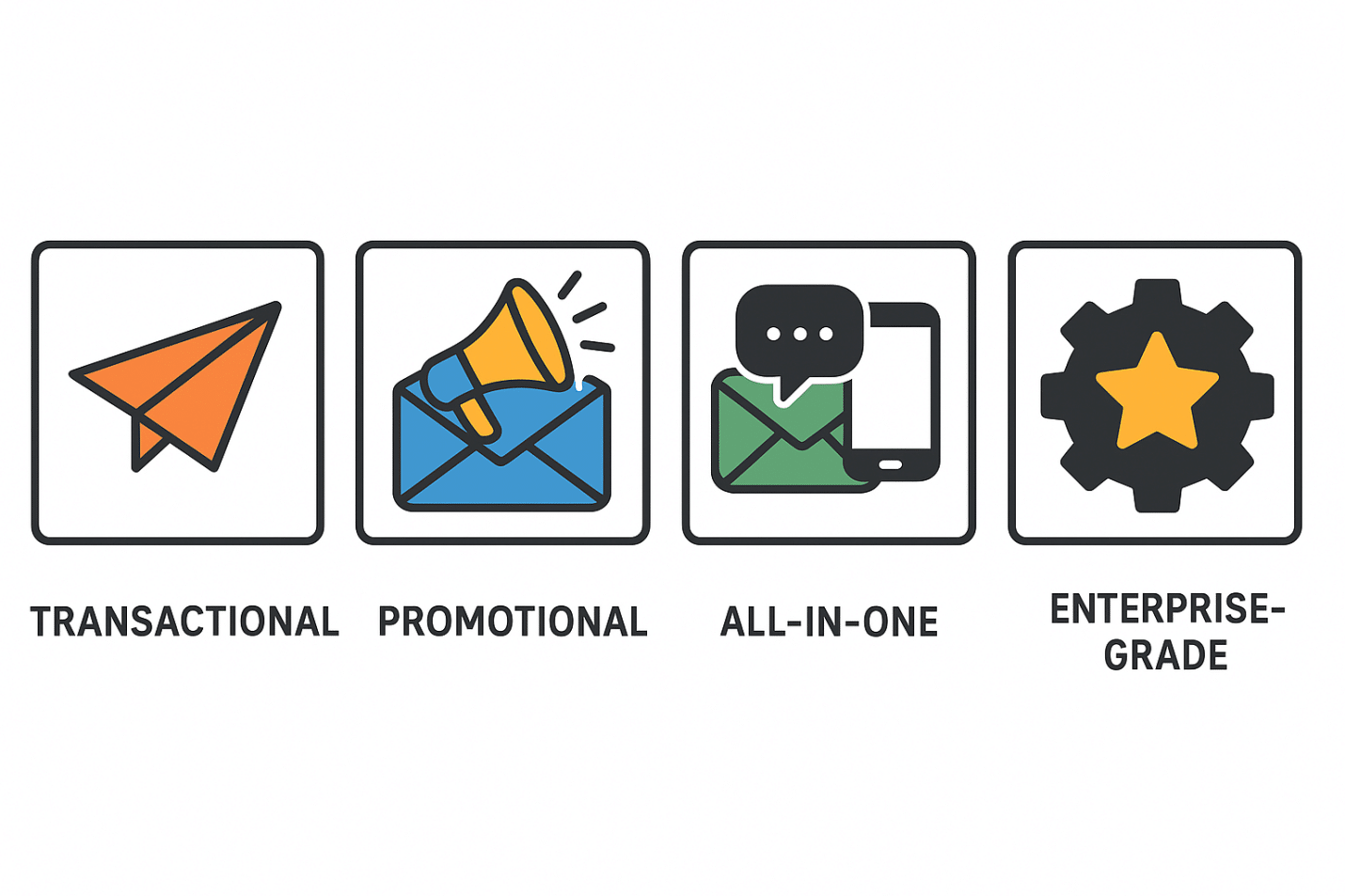
- Transactional email companies are focused on automated, triggered emails, such as purchase confirmation and password resets.
- Promotional email marketing providers are concerned with the promotion campaign, newsletters, and nurture series that aim at capturing the audiences.
- All-in-one marketing platforms that use all-in-one integrate email with other platforms such as SMS and push notifications, providing a single communication hub.
- Enterprise-grade ESPs provide high functionality features such as dedicated IPs, custom integrations, and high-end support to organizations that have needs of high complexity and volume of sending.
How Does an Email Service Provider Enhance Email Marketing?
A good email service provider (ESP) takes a simple email communication and turns it into strategic marketing which can lead to actual results.
Automation will send out emails regarding welcomes, cart reminders, and re-engagement, which will decrease the number of manual work. A/B testing can be used to perfect subject lines, content, and timing and make email a data-driven, effective marketing instrument.
It enhances deliverability by maintaining good relationships with ISPs(Internet Service Providers), authentic domains, and monitoring sender reputation. Cutting-edge segmentation allows tailored messages, contingent on the behavior and demographics of the audience.
Top 7 Email Service Providers for Business
1. EngageLab
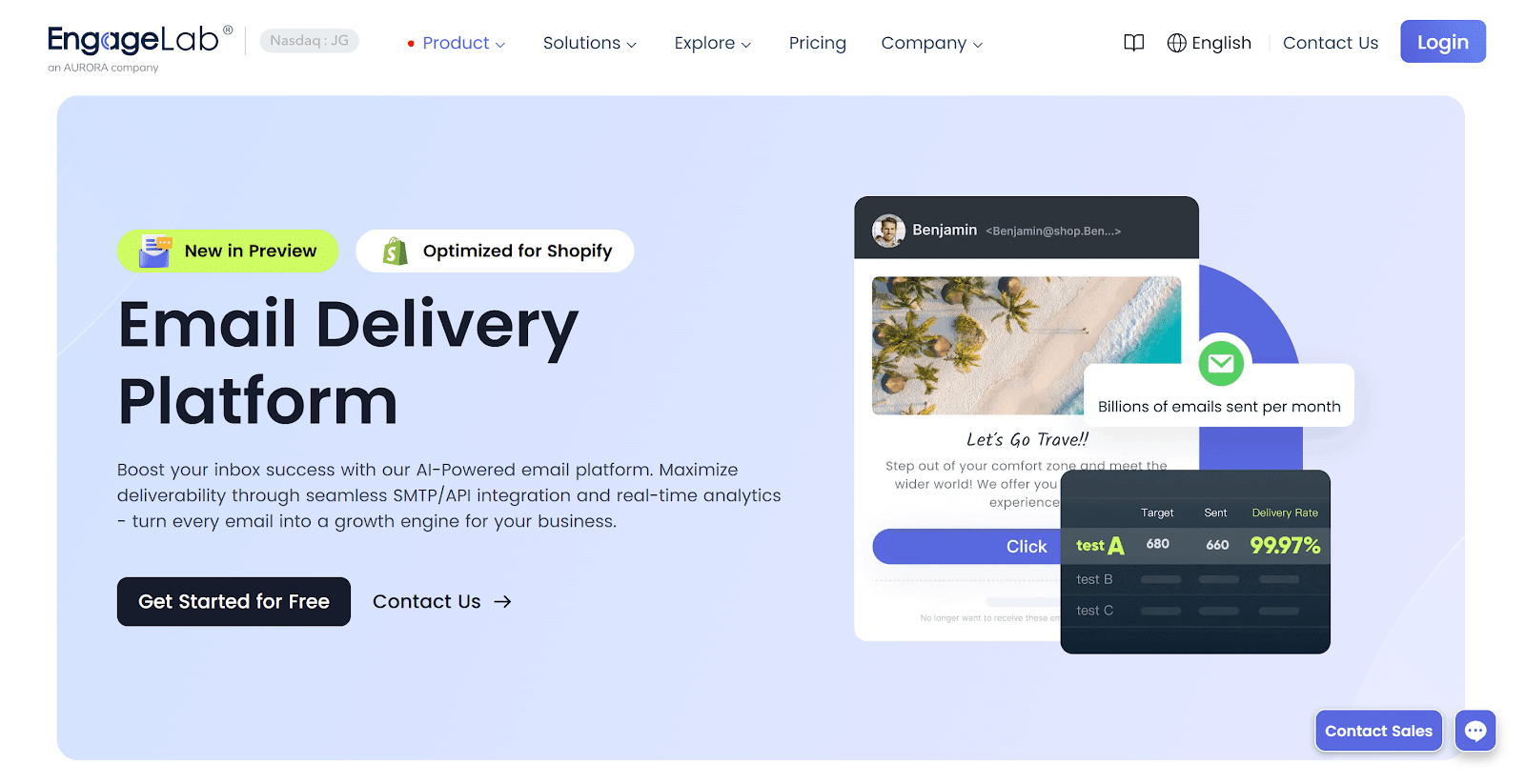
EngageLab is an all-encompassing customer engagement platform that is not limited to conventional email marketing. It is a pioneering email service provider, which integrates email services with push notifications, SMS, WhatsApp, and in-app messaging, but all of these features are handled using one, easy-to-use interface.
The unique selling proposition of EngageLab consists in the fact that it allows combining customer engagement of various channels within the framework of simplicity and ease of use. EngageLab is also a single source of truth in all the communication to customers compared to other competitors who make businesses to coordinate business activities across multiple platforms, thus becoming complex to execute customer campaigns.
Key Features:
- Live analytics dashboard with overall coverage of all channels of communication.
- Advanced automation processes with graphical journey creators in complicated multi-step campaigns.
- International infrastructure that guarantees high deliverability rates and rapid message delivery all over the world.
- Easy custom integrations with volume documentation of developer-friendly APIs and technical flexibility.
- Security compliance industry-leading such as GDPR, SOC 2, and ISO certifications.
- EngageLab supports AI marketing automation via GPTBots.ai to send automated newsletters to the email list.
2. Mailchimp

Mailchimp performs various functions including regular marketing automation and has evolved to be an email newsletter software. It has an easy-to-use interface and a free-to-use price model. Till now, It has been successful for multiple small businesses and startups and helps them automate their marketing tasks and email management..
Key Features:
- Drag-and-drop email editor that is user-friendly and has hundreds of pre-designed templates.
- In-house CRM to handle contact relationship and track interaction.
- Segmentation of audience on the basis of demographics, behavior, and engagement patterns.
- Simple e-commerce integration of product recommendations and follow-ups on purchases.
- Multi-channel campaigns: landing page builder and social media advertisement tools.
3. Constant Contact

Constant Contact is a company that prioritizes ease of use and customer care, which is why it is a great solution to those who are inexperienced and those who do not have a team of marketers.
Key Features:
- Large template library of industry-optimized designs.
- Such tools as registration forms and automated reminders in event management.
- Integration on social media to have coordinated campaigns on more than one platform.
- List-building functions such as customizable sign-up forms and pop-ups.
- Great customer service including live chat, phone support, and long training tools.
4. SendGrid
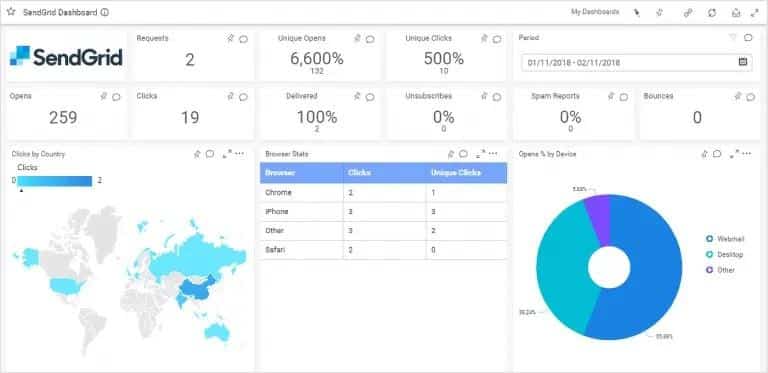
SendGRID is a email delivery company that is part of the umbrella Twilio but has transactional and marketing email delivery services with a business model that is friendly to its developers and targets business tech startups and SaaS companies.
Key Features:
- Well-built API infrastructure with high volume integration and sending.
- High-tech deliverability features such as dedicated IPs and domain authentication.
- Webhook emails tracking and real-time email activity.
- Dynamically engineered transactional email template-based personalization.
- Full-service email validation to keep lists clean.
5. HubSpot Email Marketing

The email service provider functionality of HubSpot provides full integration with the rest of its CRM and marketing automation ecosystem, forming a single platform around inbound marketing approaches.
Key Features:
- Full CRM integrations between email campaigns and the full profiles of the customers.
- Smart content capability that provides personalized email items on the grounds of recipient characteristics.
- Advanced lead scoring and nurture processes.
- A/B testing of subject lines, content, and sender names.
- All-inclusive reporting of email performance to revenue and business performance.
6. ActiveCampaign

ActiveCampaign is a blend of email marketing with sophisticated auto and CRM features and is a potent tool to be used by businesses that have customer experience in mind.
Key Features:
- Email workflow visual automation composer that builds complex and conditional email workflows.
- Predictive delivering which finds the best delivery time of separate subscribers.
- Behavior-triggered behavior-based email triggers site tracking and event tracking.
- Recommendations using machine learning.
- Win probability scoring in the sales pipeline management.
7. Brevo
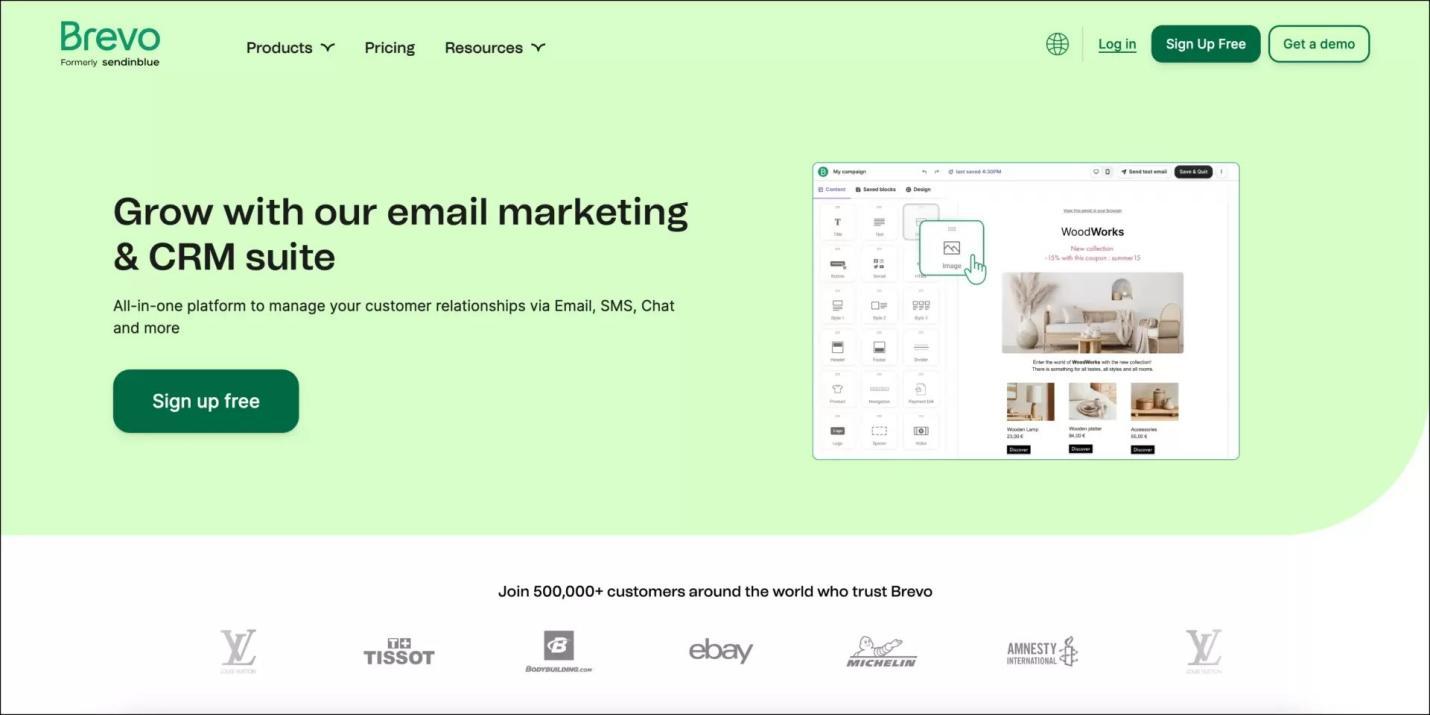
With high free tier allowances and feature-rich email service provider solution at low costs, Brevo is an affordable, feature-rich service that can be used by businesses with minimal financial means.
Key Features:
- Infinite storage of contacts at any level of plan.
- Inbuilt SMS marketing of multi-channel campaigns.
- Page builders signup form and landing page builders.
- High-deliverability transactional email services.
- Common use workflow templates as a marker, marketing automation is a feature that allows any workflow to be scheduled to run regularly and is frequently used to combine multiple actions and reactions.
What to Do to Select the Correct Email Service Provider?
In selecting an email service provider, consider several important factors that should be in line with your business objectives, customer interactions plans, as well as scalability in the long term.
Step 1: Specify Your Requirements
Begin with the description of what you really need. Calculate your monthly mailings and subscribers. Determine whether you will do marketing campaigns, transactional campaigns, or both.
List was based on such features as marketing automation, A/B testing, personalization, and multi-channel support (SMS, push, etc.).
This is to make sure that you do not pay more than you need to spend on tools that you are not going to utilize, or your future needs are underestimated.
Step 2: Set a Realistic Budget
Decide the amount that you will be able to spend on email marketing. Compare the prices based on the list size, email, and additional services. Watch out of the extra expenses like high-quality templates, sophisticated reporting, or assigned IPs.
With a proper budget, you would not spend a lot of money as your campaigns continue to grow.
Step 3: Check Deliverability
The golden rule is deliverability, your e-mails need to get into inboxes and not spam boxes.
Research the sender reputation and quality of infrastructure by the provider.
Test whether they have special IPs or domain authentication (SPF, DKIM, DMARC).
Check third-party ratings or case studies of the rates of delivery and satisfaction of clients.
The thing is that with the help of reliable deliverability, you can be sure that your messages can be noticed.
Step 4: Test Usability
Select an intuitive platform of your team. Try the dashboard and campaign builder with the help of free trials or demos. Image drag and drop, template libraries, and mobile preview. Take into account the fact that the number of new users capable of learning the system without having to train it is high.
The higher the ease of use, the quicker your campaigns will be launched.
Step 5: Verify Integrations
Integration makes your marketing ecosystem have a smooth flow of data. Integrate with your CRM, e-commerce store, and analytics. Seek the API access in case you are going to automatize the workflow or integrate with internal systems. Assess whether the ESP has a webhook or 3rd party connector such as Zapier.
Good integrations are time-saving and enhance better targeting.
Step 6: Overview Reporting and Analytics
Aggressive analytics lead to wiser marketing choices. Test outside open and click rates – verify conversion tracking and ROI reporting and bouncing. The most preferable platforms should have custom dashboards and exportable reports. Check the accuracy and availability of data towards performance optimization.
Campaigns can be optimized by providing detailed reporting.
Step 7: Customer Support Assessment
Timely assistance is essential when things go wrong. Check the level of response by the provider to test the response time of the provider using chat, email, or phone. Establish the availability hours (24/7 and business hours). Search in community forums, tutorials, and bases of knowledge.
Quality backup will guarantee quick malfunction and quick troubleshooting.
Select an ESP that will be able to grow with your company and reduce the post-migration hurdles. An appropriate platform can save time and resources and provide a stable performance of communication.
Frequently Asked Questions (FAQ)
- What is the price of an email service provider?
There are plans with free features of up to 500-2,000 contacts with numerous ESPs. Paid plans tend to cost approximately 10-20 dollars monthly and may go up to hundreds and thousands when used by companies.
- Am I able to retain my subscriber list when switching the providers?
Yes. You are allowed to export your list in the form of a CSV file and import it to a new ESP. But templates and automations will have to be rebuilt.
- What is the difference between an email service provider and the regular email client?
Simple email applications do not support automation features and regular email management. The main purpose of ESPs is to support marketing and bulk email campaigns. They come up with features like automation, segmentation, and analytics.
- What is a decent deliverability rate of an ESP?
An effective ESP would be capable of sending 95 percent or even higher of emails through. Open rates between 15-25 and the click-through rates between 2-5 are average depending on the interest of the audience.
- I am not a technical person, would I be able to use an ESP?
Most of the contemporary ESPs do not need any coding. They offer drag and drop editors and templates. The advanced users, however, can customize using API or HTML features.
Conclusion
The perfect ESP would go beyond simple email delivery and provide advanced automation, personalization, analytics, and integration features that would allow you to change the way you interact with your audience. Through prudent consideration of your requirements, experimenting with possible options, and consideration of such aspects as deliverability, scalability, and support, you will find an email marketing partner that can help you generate a sustainable value and high results in the next several years.
